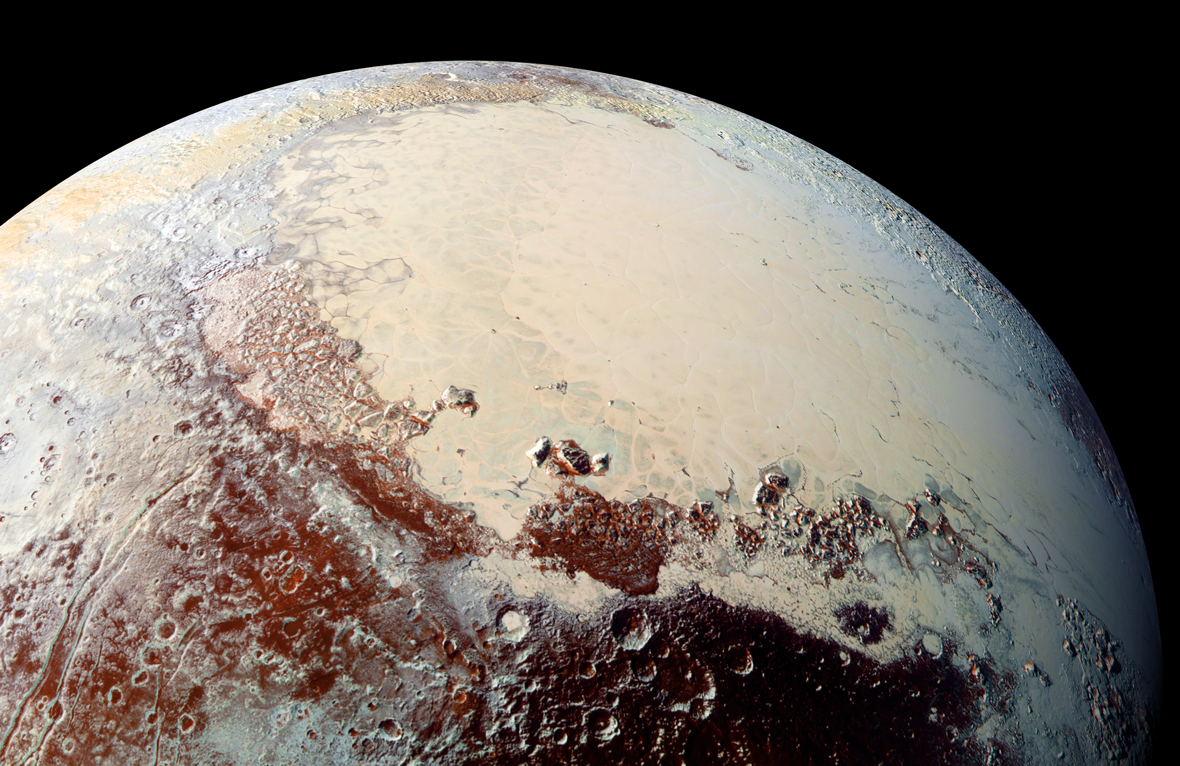
The 1000 kilometer-wide basin with the famous heart-shaped region on Pluto’s surface, Sputnik Planitia, could be located where it is today because a buildup of ice forced the whole planet to roll over, which caused cracks in the crust. These cracks suggest a subsurface ocean lies beneath them. Doctoral student at the University of Arizona’s Lunar and Planetary Laboratory, James Keane, and his adviser and assistant professor Isamu Matsuyama conducted a study and concluded that there is evidence of a frozen nitrogen pileup, which would compromise the entire planet’s weight equilibrium and throw it off kilter. This process is called true polar wander.
"There are two ways to change the spin of a planet," Keane said. "The first—and the one we're all most familiar with—is a change in the planet is a change in the planet's obliquity, where the spin axis of the planet is reorienting with respect to the rest of the solar system. The second way is through true polar wander, where the spin axis remains fixed with respect to the rest of the solar system, but the planet reorients beneath it."
Planets try to spin in the most energy-efficient way possible, and to accomplish this they can reorient themselves so that the area with the most extra mass is found at the equator and mass deficits are found at the poles. Whereas Earth’s axis is only slightly tilted so that its equatorial regions receive the most sunlight, Pluto’s axis is like a top lying on its side so that its poles receive the most sunlight and its equatorial regions are always cold. In fact, they are almost negative 400 degrees Fahrenheit, which means any nitrogen present is frozen solid. In the time it takes to make its full rotation (248 Earth years), nitrogen and other gases condense in the permanently shadowed regions, vaporize, and re-condense on the opposite side of Pluto. This causes seasonal snowfall on Sputnik Planitia.
"Each time Pluto goes around the sun, a bit of nitrogen accumulates in the heart," Keane said. "And once enough ice has piled up, maybe a hundred meters thick, it starts to overwhelm the planet's shape, which dictates the planet's orientation. And if you have an excess of mass in one spot on the planet, it wants to go to the equator. Eventually, over millions of years, it will drag the whole planet over."
